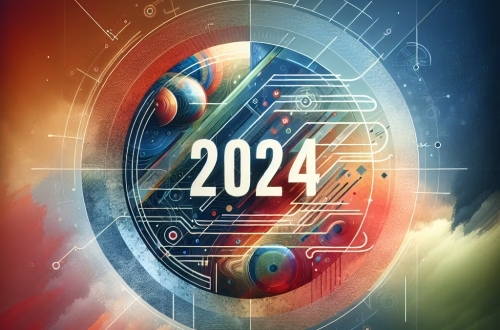Gemini 2.5 Flash for Cost-Sensitive Use Cases vs Pro
Summary:
Google’s Gemini 2.5 Flash is a streamlined, cost-effective AI model designed for high-volume, low-latency tasks where budget constraints matter. Unlike Gemini 2.5 Pro—a more powerful model for complex reasoning—Flash prioritizes affordability for simpler prompts like chatbots, summarization, and data filtering. This article compares both models, helping novices understand their strengths, trade-offs, and ideal applications. For startups, small businesses, or developers scaling AI workflows, choosing between Flash and Pro hinges on balancing costs against performance needs. Understanding this distinction is critical for optimizing AI spending without sacrificing essential functionality.
What This Means for You:
- Lower Costs for High-Volume Tasks: Gemini 2.5 Flash slashes expenses for repetitive tasks. If you need quick answers from large datasets or run a customer support chatbot, Flash can reduce bills by up to 90% compared to Pro, letting you scale affordably.
- Prioritize Simpler Workflows with Flash: Use Flash for classification, translations, or extracting keywords—tasks needing minimal reasoning. Save Gemini 2.5 Pro for advanced analysis, like coding or strategic planning. Tip: Audit your AI tasks—offload low-complexity work to Flash.
- Optimize Token Usage for Budgets: Flash charges less per token, making it ideal for processing lengthy documents or logs. If handling 1M+ tokens daily, Flash prevents overspending. Monitor usage via Google AI Studio to avoid “hidden” costs from underperforming prompts.
- Future Outlook or Warning: While Flash excels in cost savings today, Google may adjust pricing tiers. Avoid over-reliance on Flash for mission-critical tasks requiring nuance—its smaller size can compromise accuracy on ambiguous prompts. Always test outputs before full deployment.
Explained: Gemini 2.5 Flash for Cost-Sensitive Use Cases vs Pro
Introducing Gemini 2.5 Flash vs Pro: Speed vs. Smarts
Google’s Gemini family offers tiered solutions for diverse needs. Gemini 2.5 Pro is a robust multimodal model excelling in complex reasoning, coding, and creative tasks—ideal for R&D or intricate problem-solving. By contrast, Gemini 2.5 Flash is a distilled, lightweight variant built for speed and cost-efficiency. It shares the same 1 million token context window as Pro but uses a smaller neural architecture, enabling faster responses at a fraction of the price. For novices, think of Pro as a luxury sedan and Flash as a reliable commuter car: both get you there, but Pro offers premium features for tougher terrain.
Ideal Use Cases for Gemini 2.5 Flash
Flash thrives where tasks are repetitive, straightforward, or demand high throughput:
- Real-Time Chatbots: Handling FAQs, routing inquiries, or retrieving simple info from knowledge bases.
- Text Processing: Summarizing articles, filtering spam, or extracting entities (dates, names) from documents.
- Classification: Tagging support tickets, sorting product reviews, or moderating content.
- Data Transformation: Basic language translations, reformatting JSON/CSV files, or parsing logs.
Example: A small e-commerce site uses Flash to categorize 10,000 customer reviews daily. At $0.00035 per 1K input tokens, this costs ~$3.50/day—versus $35+ with Pro.
Where Gemini 2.5 Pro Outperforms
Pro’s larger parameter count enables deeper understanding, making it superior for:
- Complex Reasoning: Solving math problems, debugging code, or analyzing legal contracts.
- Creative Work: Drafting marketing copy, generating story ideas, or composing emails requiring tonal nuance.
- Multimodal Tasks: Interpreting images/videos alongside text—e.g., describing infographics or identifying trends in charts.
Despite costing 5–10x more per token, Pro delivers higher accuracy for open-ended queries. Startups prototyping AI products might begin with Pro for critical features and use Flash for ancillary tasks.
Pricing & Limitations: The Fine Print
Flash’s cost advantage—$0.00035/1K input tokens vs. Pro’s $0.0035—comes with trade-offs:
- Context Depth: While both support 1M-token contexts, Flash struggles with highly nested or ambiguous prompts.
- Output Quality: Flash may produce shorter, less detailed responses, requiring careful prompt engineering.
- Multimodal Constraints: Flash handles text-centric tasks best; avoid using it for image-heavy workflows.
Novices should test both models via Google AI Studio before committing—especially for tasks requiring precision.
Strategic Implementation Tips
Maximize savings with a hybrid approach:
- Route by Complexity: Use APIs to send simple prompts (e.g., “Summarize this in one sentence”) to Flash and advanced ones (“Explain quantum computing”) to Pro.
- Pre-Process Inputs: Clean data beforehand—remove irrelevant text to reduce token waste.
- Cache Frequent Responses: Store common Flash outputs (e.g., product descriptions) to avoid reprocessing.
Warning: Flash isn’t suitable for medical, financial, or high-stakes decisions—always validate outputs.
People Also Ask About:
- How much cheaper is Gemini 2.5 Flash compared to Pro?
Gemini 2.5 Flash costs approximately $0.00035 per 1,000 input tokens versus $0.0035 for Gemini 2.5 Pro—making Flash roughly 90% cheaper. For output tokens, Flash charges $0.00105 per 1K tokens vs. Pro’s $0.0105. However, costs vary by region and volume. Use Google’s pricing calculator for exact estimates.
- Can Gemini 2.5 Flash handle coding tasks?
Flash can manage basic code snippets (e.g., HTML/CSS adjustments) but struggles with complex algorithms or debugging. For development-heavy projects, Gemini 2.5 Pro is better suited due to its superior reasoning and chain-of-thought capabilities. Test Flash for lightweight scripting but upgrade to Pro for larger codebases.
- Is Flash reliable for non-English languages?
Flash supports 100+ languages but performs best in English. For languages with limited training data (e.g., Swahili or Icelandic), Pro’s advanced architecture reduces translation errors. Always benchmark Flash’s outputs for accuracy before deploying multilingual systems.
- Does Flash work with Google’s Vertex AI?
Yes, both Flash and Pro integrate with Vertex AI, Google’s managed ML platform. Vertex AI provides tools for deploying, monitoring, and scaling these models—ideal for enterprises needing governance controls or custom tuning.
Expert Opinion:
Experts caution that while Gemini 2.5 Flash is revolutionary for cost-sensitive AI adoption, its reduced size increases hallucination risks compared to Pro. Businesses should implement rigorous validation checks, especially when automating customer-facing tasks. As Google expands Flash’s capabilities, expect tighter integration with edge devices and IoT ecosystems. However, the trend toward smaller, task-specific models like Flash underscores a broader shift—valuing efficiency over generality in enterprise AI.
Extra Information:
- Gemini API Documentation – Official guide to model specs, including token limits and multimodal support for Flash vs. Pro.
- Vertex AI Pricing Calculator – Compare real-time costs for Flash and Pro based on your region and workload.
- Google’s Gemini Developer Blog – Updates on new features, limitations, and optimization techniques for both models.
Related Key Terms:
- Best Gemini 2.5 Flash use cases for startups
- Google AI cost optimization for small businesses
- Token efficiency with Gemini 2.5 Flash
- Gemini Pro vs Flash accuracy comparison 2024
- Lightweight generative AI models for developers
Check out our AI Model Comparison Tool here: AI Model Comparison Tool
#Gemini #Flash #costsensitive #cases #Pro
*Featured image provided by Pixabay



